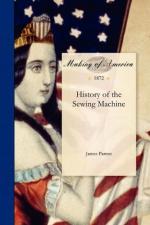|
This section contains 848 words (approx. 3 pages at 300 words per page) |

|
The sewing machine stitches materials together by using a needle and thread. It is important both as a home and an industrial appliance. Because it made possible the mass manufacture of reasonably priced ready-made clothing, the sewing machine relieved women of one of their most demanding, time-consuming domestic chores--manually sewing all of the family's clothing.
The first sewing machine patent was issued in 1790 to Thomas Saint, an English cabinetmaker. This machine used a notched needle, awl, and chain stitch to sew leather and heavy canvas, but the device was not practical. Various inventors made attempts in the early 1800s to develop a sewing machine focused on duplicating the motions of hand sewing. A machine patented in England in 1807 by Edward and William Chapman made the first crucial innovation: it used an "eye-pointed" needle, a needle with the eye at the point rather than at the top...
|
This section contains 848 words (approx. 3 pages at 300 words per page) |

|


